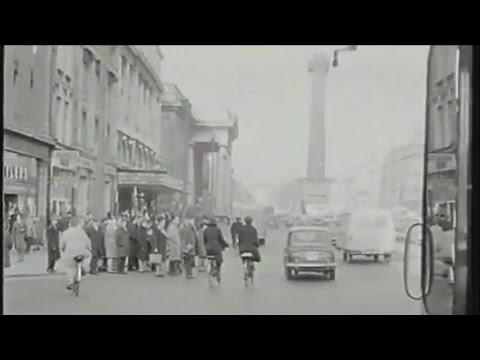Dublin is the capital and largest city of Ireland.Dublin is in the province of Leinster on Ireland’s east coast, at the mouth of the River Liffey. The city has an urban area population of 1,273,069.The population of the Greater Dublin Area, as of 2011, was 1,801,040 persons.
Founded as a Viking settlement, the Kingdom of Dublin became Ireland’s principal city, following the Norman invasion

As part of the building programme that also cleared the inner city slums, from the 1950’s on-wards, historic Georgian Dublin came under concerted attack by the Irish Government’s development policies. Whole swathes of 18th-century houses were demolished, notably in Fitzwilliam Street and St Stephen’s Green, to make way for utilitarian office blocks and government departments. Much of this development was fueled by property developers and speculators, keen to cash in on the buoyant property markets of the 1960’s, late 1970’s and 1980’s. Many schemes were built by Government supporters with the intention of profitably letting to highly desirable State tenants such as government departments and State agencies. It has been proven that many buildings were approved by government ministers personally connected with the developers involved, often to the detriment of the taxpayer and the proper planning and preservation of Dublin city.
Some of this development was also encouraged by Ireland’s dominant nationalist ideology of that era, which wanted to wipe away all physical reminders of Ireland’s colonial past. An extreme example of this kind of thinking was the destruction of Nelson’s Pillar in O’Connell Street in 1966. This statue of the famous British admiral was a Dublin landmark for a century, but was blown up by a small bomb shortly before the 50 year commemorations of the Easter Rising. In 2003, the Pillar was replaced as a landmark by the Dublin Spire which was erected on the same spot. A 120 meter tall tapered metal pole, it is the tallest structure of Dublin city center, visible for miles. It was assembled from seven pieces with the largest crane available in Ireland and is the tallest street sculpture in the world.
Far from the destructive practices of the 1960’s diminishing as time went on, if anything they got steadily worse, with the concrete office blocks of earlier times being replaced with the idea of Georgian pastiche or replica offices in place of original 18th century stock. Whole swathes of Harcourt Street and St. Stephen’s Green were demolished and rebuilt in such a fashion in the 1970’s and 1980’s, as were parts of Parnell Square, Kildare Street, North Great George’s Street and many other areas around the city. Many saw this practice as an ‘easy way out’ for planners; a venerable Georgian front was maintained, while ‘progress’ was allowed to continue unhindered. This planning policy was pursued by Dublin Corporation until around 1990, when the forces of conservationism finally took hold.
